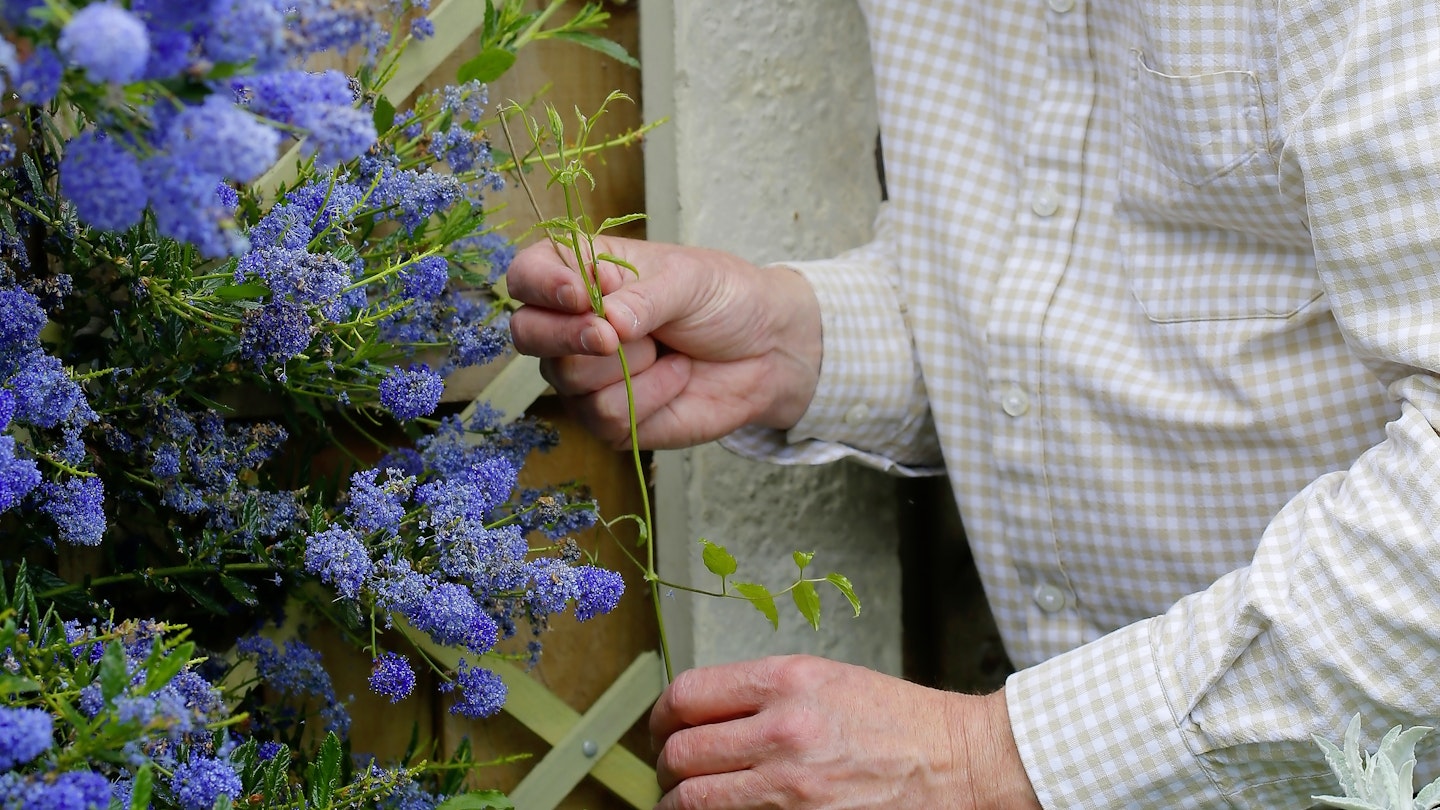Particularly if you have a small garden, climbing plants take up very little room and decorate your walls handsomely. Plants such as honeysuckle or clematis start to produce tendrils in late spring and early summer and will want something to cling onto as the head skywards!
These don’t climb and cling naturally, so you can help them by directing them where to go, ensuring your plant grows healthily, attractively and stays easy to maintain.
It’s also best to do this while the stems are soft and pliable – once they become woody and strong they won’t go where you want them to, so tie them in weekly for control and to get the best out of the plant.
Your aim is to create an open fanned framework that’ll cover your wall thoroughly, but be sure that your supports are sturdy, as your climbers will likely get very heavy with age. You wouldn’t want all your hard work to flop over unnecessarily!
Step by step
- Make sure you give plants something to grab on to, such as a freestanding obelisk, metal wire wall supports or a trellis.
- Tie in stems with soft garden twine to supports and knot them securely, but not too tightly. Snip off excess twine.
- Train into a fan shape, and then prune off excess weak growth that doesn’t fit your intended framework.
- If your climber develops fruitless, spindly stems, shorten the main stems by a third, to encourage vigour and bushing.
Top Tip!
Recycle thin strips of soft old t-shirts or rags from around the house to use as plant ties – they’ll be just as soft and undamaging to delicate stems as twine.
